
Long Term Review: 2013 Rocky Instinct 970
The 2013 Rocky Mountain Instinct 970 is a long travel, big wheeled trail bike with 130mm of front and rear travel and adjustable geometry that will handle just about anything you can throw at it. Released shortly after the 650B Altitude, the Instinct slipped under the radar, and on the trail, I frequently heard people stating that they hadn’t heard of the bike. However, Rocky had no problem selling out of Instincts for 2013 and recently launched a full range of carbon bikes for 2014.
In its first year the Instinct was available in an aluminum frame with two different specs; being reviewed is the higher end 970. The bike is as stealthy as they get, so black, it’s rumoured that AC/DC wrote a song about it before it was even released! Subtle black on black graphics with matching componentry make a bike that’s not super flashy. For details on spec and high res product photos, see our first look article HERE.
The 970 has a very decent loadout including RaceFace Turbine cockpit and cranks, Shimano XT drivetrain, Avid Elixir brakes and DT Swiss wheels. The handlebar is a little crowded with the Reverb control and CTD rear shock lever, but the cables are all relatively well managed with the internal routing and the Stealth dropper post. The price is very reasonable for such a high end spec, coming in at $4400. For about $1000 less, you can get the SRAM equipped 950 with no dropper post and a less stealthy paint job.
Fit and Set-Up
The very first thing that I noticed when I got on the size Large bike was that the top tube felt quite short – comparable to most medium frames I have experienced – and the stem is a short (by XC standards) 70mm. This compact cockpit gives you a position of command over the bike, making it feel a little smaller, more playful and for the most part, it handles really quickly, much like a 26” bike. Rocky’s StraightUp geometry puts you fairly aggressively forward over the pedals.
When you start climbing the forward position and the shorter than normal cockpit ends up feeling comfortable and totally natural. The front end was seemed a little high at first, but at no point did I feel any need to lower it.
I did try a wider handlebar, but it made the handling a touch on the clumsy side; the stock 725mm bar worked perfectly. The super thin RMB branded grips were replaced with my favourite grips (Ergon).
Suspension setup was a little tricky, since the suspension rate curve isn’t strictly progressive. The first ~15% of the stroke has a high rate (more force required to move the shock), which forces the bike to sit slightly higher in it’s travel; the mid stroke is fairly linear and then it ramps up for the end stroke to prevent bottom out.
This made finding the sweet spot for the suspension a little trickier, since setting the bike up with “normal” sag may give false readings; too much pressure and the small bump sensitivity will suffer because of how high the bike sits in the travel (less negative travel) and also, when it was new, there was a lot of friction in the bushings (stutter bumps were harsh). The mid stroke is quite linear, which caused the suspension to wallow a bit under pedalling, especially if it was in the Descend setting. On the plus side, having the remote CTD lever on the bar allowed for quick transitions between the different compression damping levels on the fly.
After several rides experimenting with suspension setup, and giving the rear shock and bushings an adequate break in period, the suspension performance improved drastically. The sharp ramp up at the end of the stroke meant that big hits were absorbed, and the back end never fully bottomed out.

After the initial break-in and tuning period, the rear suspension excelled in a variety of conditions.
The Ride
Where the Instinct absolutely excels is climbing. It may be a long travel bike that weighs in at a touch over 30 pounds, but when you point it up a hill, it really comes alive and feels much lighter than it is. The light wheels and steep seat angle likely lend a lot to that, with relatively quick acceleration and an aggressive position that keeps your weight fairly neutral. The more technical the terrain, the happier the bike is, and pushing it through rough climbs under power, the rear end was always stiff and responsive. Another thing worth noting, is even with a very short stem, the front end didn’t wander or hesitate, again because of the forward riding position and compact cockpit.
The CTD remote is great – being able to easily switch your rear suspension settings without having to take your hand off the bar allows seamless transitions from climbing to descending to climbing with no compromise.
The bike comes equipped with Rocky Mountain’s Ride9 system that allows the rider to easily adjust geometry and shock rates. I tried all the settings during the initial setup period and found that making the bike steeper with a higher bottom bracket seemed unnecessary given how well the bike climbed in the neutral position. The slackest position for the shock made the bike a bit too slack for my tastes, and it was the one position that had an effect on the climbing performance, it also dropped the bottom bracket low enough to cause some clearance issues. In the end, I settled on the slightly slacker setting for lighter riders (Position 5 according to the Ride9 mini-site). This shock position gives a slack 68 degree head angle and was the most forgiving for shock pressure set up at my weight.
Tire choice is something that people will debate until the end of time, but one thing that I am certain of is the selection for this bike really limited it. The Mountain King up front was okay, but just not really big or aggressive enough to let the bike do what it was truly capable of; the X-King out back would be great on smooth fast singletrack, but anytime the trail got rocky or rooty, which it does around here a lot, then traction became very inconsistent and a couple of times, it was dangerous. The first few rides were on the stock tires, and then the front was swapped out to a 2.25 Ardent and the Mountain King was moved to the back. The Ardent had a lot more traction, allowing me to push the bike harder and really find out what it was capable of.
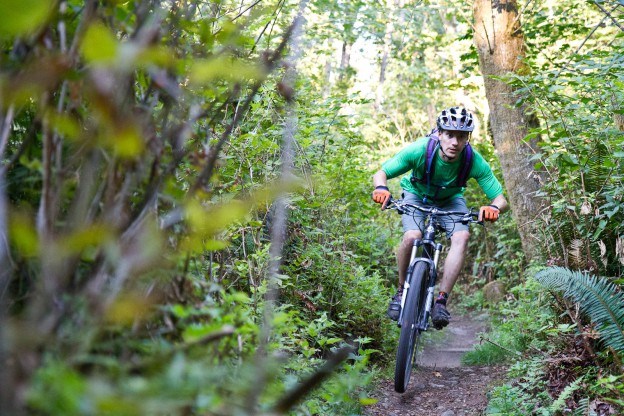
Tire spec is a matter of personal preference but confidence in pushing the bike went up significantly with a tire change.
Putting bigger rubber on the bike will be limited because the stock rims are true cross country width. Riding the bike aggressively caused noticeable flex, especially when coupled with the flex from the long travel 32mm fork. The big wheels really do like to roll over stuff, and as long as momentum is kept up, then the bike was a true juggernaut. I had the chance to ride it through the NSMBA toonie Enduro series, riding such trails as Seventh Secret and Ladies Only at a race pace, and walked away with personal best times. Even with the lightweight wheels, it was predictable, loved to keep momentum and was a total blast to ride.
Maintenance
Extended bike tests are great for so many reasons; you really get to know the bike, discovering all the nuances that a month or two doesn’t reveal, and you also get to see what happens when you lose that showroom feel and the wear and tear starts to show.
The time spent punishing the Instinct was not without incident: a couple of spokes broke on the back wheel, and both wheels required a re-tensioning a couple of times. The straight pull spokes were hard to find replacements because of their length; I’d advise checking in with your local bike shop on availability even before you need spokes.
Rocky’s ABC pivots save weight but do require some maintenance. It would be nice to have documentation on how to service the pivots, but I couldn’t find any. When I did pull the pivots apart to check them, the bushings were clean, dry and not showing any signs of wear, I was seriously impressed, although that faded fast when trying to put the myriad of parts back together (I’ve since learned a trick to make replacing the o-ring seals much easier; pull them off the pivot and over the clevis before disassembly!).
After a couple of pivots started to creak, I did find out that the torque spec on them is important: too tight and they will not be silent. This is a dry system so creaking will be the result of dust and should be alleviated by removal, cleaning, and reinstallation. Everything else on the bike was fine through the test period, although the front derailleur was a bit temperamental, something that may have been a cable routing issue.
Overall Impressions
It took me a long time to come to terms with what this bike truly was; it has relaxed geometry, lots of suspension travel for a 29er, which made me want to compare it to something like the Santa Cruz Tallboy LT, but the wheel/tire and fork spec, makes the bike seem much better suited to an aggressive cross country application, which is where the Instinct is listed on Rocky Mountain’s website.
The linear feel of the rear shock in the mid stroke could possibly be improved with a different shock tune. As it stands, it sits in a bit of a no mans land, since most wanting an XC bike will go for the Element 29er, and those wanting a big wheeled aggressive trail bike will be drawn towards the Altitude.
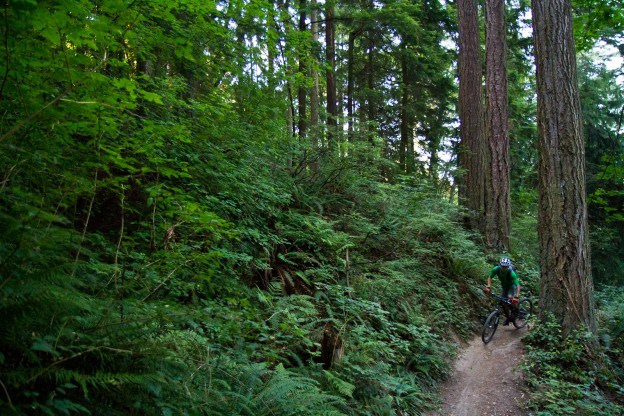
With a full range of carbon models for 2014, the Instinct will likely gain popularity over the next while.
The bike is incredibly competent on all terrain, but held back by the fork and wheels. With a bigger fork such as a Fox 34 or a RockShox Pike, and some meatier tyres/rims, this bike would be a trail slayer (as seen in the 2014 Instinct BC Edition). The weight may suffer, but the climbing prowess of the bike will more than make up for that.
With a few tweaks to the stock spec the Instinct turned out to be a capable bike for our local conditions, and Ride9 means this should turn out to be true just about everywhere. Considering the 2013 bike sold out everywhere, and Rocky has introduced a full range of carbon and aluminum models for 2014, the Instinct will likely not be overshadowed by its 650B stablemate much longer.
Are you tempted by the Instinct or is the 650B Altitude more up your alley?
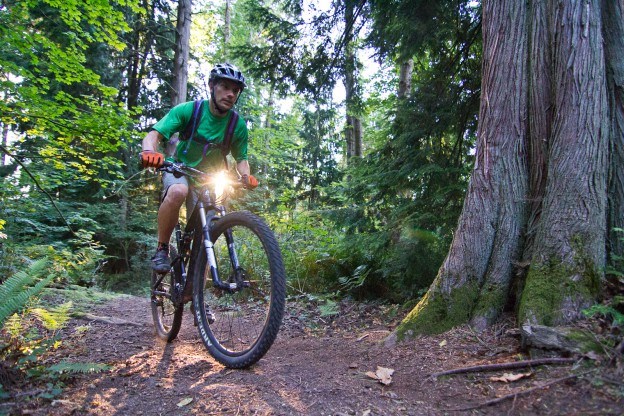

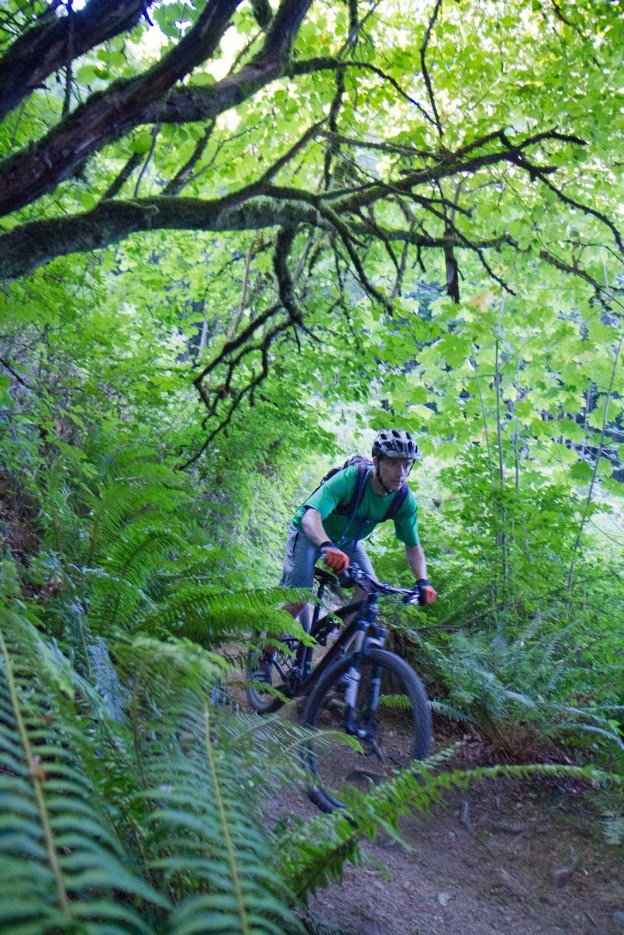
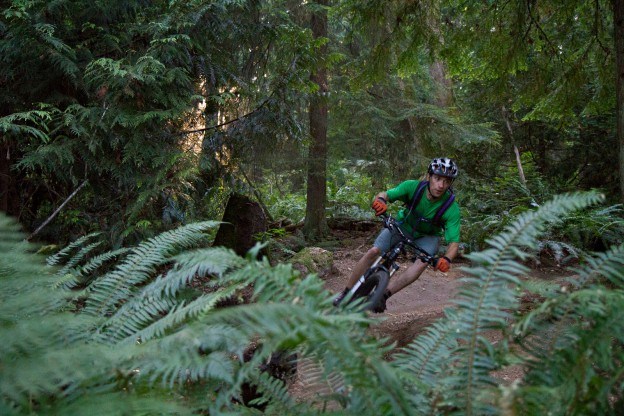








Comments
ahoelk
10 years, 7 months ago
Great review on this bike - seems like a very capable and versatile bike. It would be handy to have the riders approx. weight mentioned in the article in the section explaining the RIDE 9 system to provide reference point for set- up. I have ridden this bike and would agree that the tire choice is less then ideal on roots or rocks in wet and slippery conditions.
Reply
Steve
10 years, 8 months ago
A small addition to my review:
The CTD fork is a big improvement over the RLC forks of prior years, however, I did find it was still a bit linear; I could get through a lot of travel really easily. I rarely moved the CTD control out of descend, and wished that it was still a little more open on that setting.
Like with any bike parts, forks are incredibly personal to what you like, and I prefer something that is a lot more supple on the initial stroke, which then ramps up. That said, the function of the fork was never an issue once I got it set up for my weight.
Reply
Please log in to leave a comment.